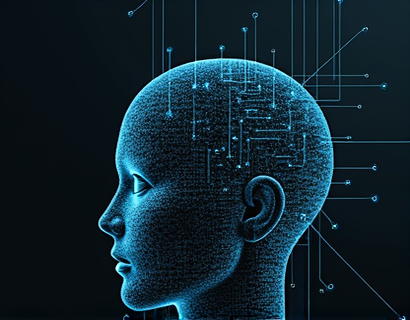Transforming Healthcare Communication: The Impact of AI-Driven Chat Interfaces in Intensive Care Units
The integration of artificial intelligence in healthcare, particularly within Intensive Care Units (ICUs), marks a significant advancement in patient care and stakeholder communication. An AI-driven chat interface is emerging as a pivotal tool, offering real-time insights and enhancing the exchange of information among patients, caregivers, and healthcare professionals. This technology is not only streamlining access to critical data but also empowering informed decision-making in high-stakes medical environments.
Enhancing Access to ICU Information
The complexity of ICU services and the rapid evolution of medical knowledge pose significant challenges for all stakeholders involved. An AI-driven chat interface addresses these challenges by providing instant access to up-to-date information about ICU services, protocols, and best practices. This ensures that everyone, from patients and their families to healthcare providers, has the necessary knowledge at their fingertips, fostering a more informed and collaborative approach to care.
Real-Time Insights for Better Decision-Making
One of the most transformative aspects of this technology is its ability to deliver real-time insights. In the ICU, where every minute counts, timely access to accurate information can significantly impact patient outcomes. The AI chat interface continuously updates its database with the latest research findings, treatment guidelines, and hospital-specific protocols. This ensures that healthcare professionals can make evidence-based decisions swiftly, improving the quality of care and patient safety.
Improving Patient and Caregiver Communication
The communication gap between patients, their families, and healthcare teams is a well-documented issue in healthcare. An AI-driven chat interface bridges this gap by providing a user-friendly platform for all parties to access and share information. Patients and caregivers can ask questions, receive explanations about treatments, and understand their loved ones' conditions in real-time. This transparency not only alleviates anxiety but also promotes a more active role for patients and their families in the decision-making process.
Empowering Healthcare Professionals
For healthcare professionals, the AI chat interface serves as an invaluable resource. It offers quick access to patient histories, lab results, and treatment plans, reducing the time spent on data retrieval and allowing more focus on patient care. Additionally, the interface can provide alerts and reminders for critical care tasks, medication administration, and follow-up procedures, enhancing efficiency and reducing the likelihood of errors.
Facilitating Interdisciplinary Collaboration
The ICU environment is inherently multidisciplinary, involving a range of specialists and support staff. An AI-driven chat interface facilitates seamless communication among these professionals by providing a centralized platform for information sharing and discussion. This collaborative approach ensures that all team members are on the same page, leading to more cohesive and effective care strategies.
Case Studies and Real-World Applications
Several healthcare institutions have already implemented AI-driven chat interfaces with notable success. In one hospital, the introduction of such a system led to a 30% reduction in the time taken to access critical patient information. Another facility reported a significant improvement in patient satisfaction scores, attributed to the enhanced communication and transparency provided by the chat interface. These examples underscore the practical benefits and potential for widespread adoption in various healthcare settings.
Addressing Privacy and Security Concerns
While the benefits of AI-driven chat interfaces in healthcare are clear, concerns about patient data privacy and security are paramount. Robust encryption methods, compliance with regulations such as HIPAA, and strict access controls are essential to ensure that sensitive information remains protected. Transparent policies and regular audits further build trust among users, making the technology more acceptable and effective in clinical environments.
Future Developments and Potential Expansions
The future of AI-driven chat interfaces in healthcare looks promising, with ongoing advancements in natural language processing and machine learning. These technologies will enhance the chat interface's ability to understand and respond to complex medical queries, providing even more accurate and personalized information. Additionally, integration with wearable devices and remote monitoring systems could extend the scope of real-time insights, supporting proactive care and early intervention.
Conclusion
The implementation of AI-driven chat interfaces in ICUs represents a significant step forward in healthcare technology. By providing real-time insights, enhancing communication, and empowering all stakeholders with knowledge, these tools are set to revolutionize the way care is delivered and received. As the technology continues to evolve, its potential to improve patient outcomes and streamline healthcare operations becomes increasingly evident, marking a new era in intensive care and beyond.










































